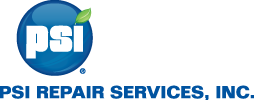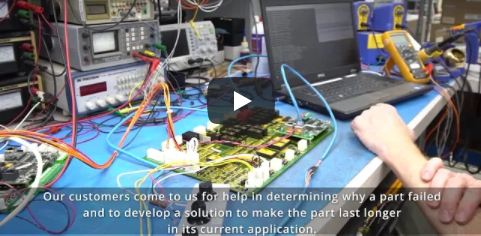The Application: Pitch Drive Amplifier in GE 1.5 ESS Wind Turbines
Editor’s Note: This Blog is Part One in a Five-Part Series about the Most Failure-Prone Electrical Systems in Wind Turbines That PSI Repair Most Frequently Services
If you read our recent article about electrical failures in wind turbines published in North American Clean Energy, you’ll know that electrical system failures are responsible for 50% of all Wind Turbine (WT) downtime according to Reliawind report data.

What’s surprising is that the system reported to have the single highest failure rate isn’t the power converter – and, even more surprising, it isn’t even technically considered an “electrical” system by their classification and therefore isn’t included in that 50% mark (making that figure an underestimation).
 The Pitch System – which is located in the turbine hub and is designed to regulate rotor blade angles in order to maximize wind power production – holds the honor of having highest stand-alone rate of failure in WTs. With a 23% contribution to overall downtime across multiple WT manufacturers, it edges out the second most failure-prone part, the power converter, by 5%.
The Pitch System – which is located in the turbine hub and is designed to regulate rotor blade angles in order to maximize wind power production – holds the honor of having highest stand-alone rate of failure in WTs. With a 23% contribution to overall downtime across multiple WT manufacturers, it edges out the second most failure-prone part, the power converter, by 5%.
Since WT failures increase exponentially after 10 years in service, it’s no surprise that turbines installed around 2005 are especially vulnerable to Pitch System failure.
One of the most common examples of this in practice is the Pitch Drive Amplifier found in the Pitch System of GE’s 1.5 ESS WT, a popular turbine for many wind farms in the mid-to-late 2000s with about 12,000 in operation worldwide. We refer to this Pitch Drive Amplifier system as the GE H-Bridge / Hub Converter.
 Temperature, vibration, and humidity are three of the most common causes of failure for electrical components, with temperature being the dominant stressor causing most stoppages. We found that the GE Pitch Drive Amplifier was no different in this respect.
Temperature, vibration, and humidity are three of the most common causes of failure for electrical components, with temperature being the dominant stressor causing most stoppages. We found that the GE Pitch Drive Amplifier was no different in this respect.
After a root cause analysis study of 50 Pitch Drive Amplifier units—many of which revealed irreparable damage to circuit boards (see right for an example of this)—we concluded that 85% of the pitch drive failures were due to capacitor breakdowns.
Wind speed variability, sun, capacitor losses, and switching losses caused the capacitors to overheat internally and expel electrolytic fluid, destroying the driver board. In addition, transistor failures were due to improper switching frequencies and speeds.
Based on the findings of our failure analysis and subsequent results of a 6-month field test, we designed a new and improved driver board that prevented failures from high heat loads and stripped ground screws.
PSI’s custom upgrade included the following preventative repair actions:
- Replacing the OEM Switching Driver with PSI Repair’s own part
- Installing upgraded capacitors
- Using steel inserts to create more durable ground lug threads
- Enhancing the transistors to match the switching frequency
This upgrade resulted in an 81% Reduction in year over-year failures (using a 4-year analysis) and cost-savings of approximately $417,000 on labor, material and lost revenue:

All told, we’ve upgraded and installed over 3,000 of these Pitch Drive Amplifier systems to date.
PSI Repair has helped the wind industry by repairing over 28,000 wind components over the last 5 years. So if your wind turbine is aging or frequently failing because of electrical, hydraulic, or mechanical faults, call us—we’ll get to the bottom of these issues so that your turbine runs faster and better than ever. You can also visit our Wind Turbine Component Repair page for more information about our WT repair and engineering services.








